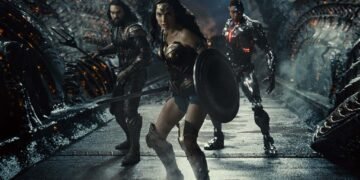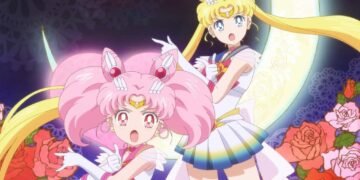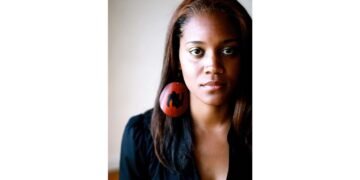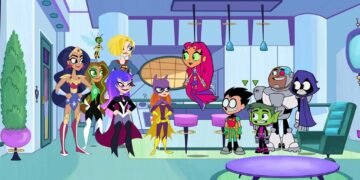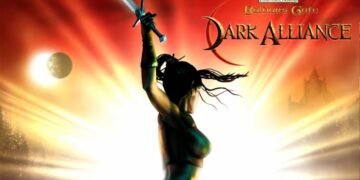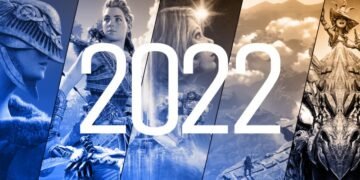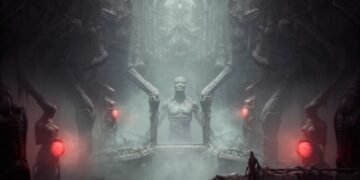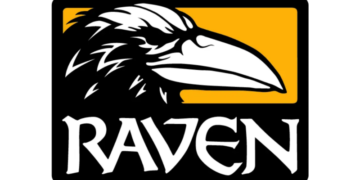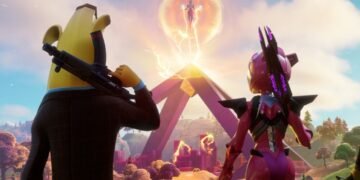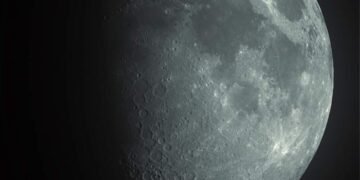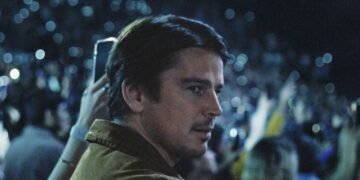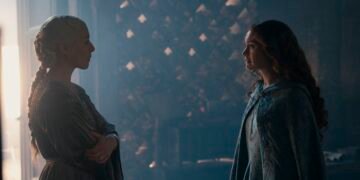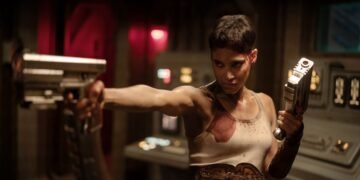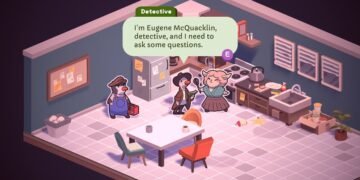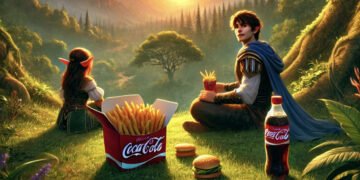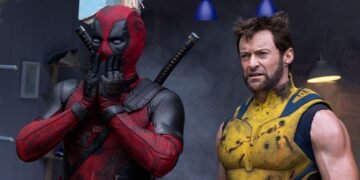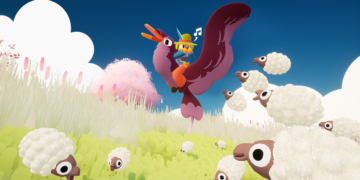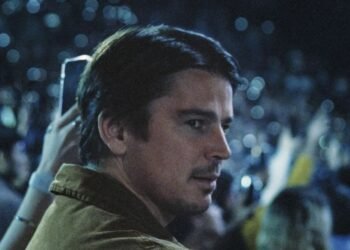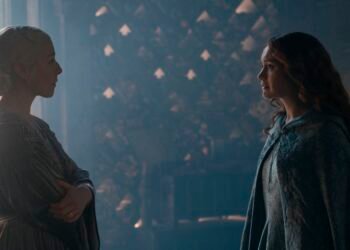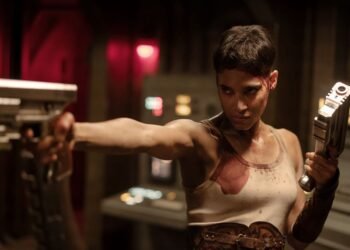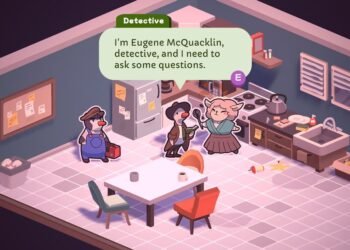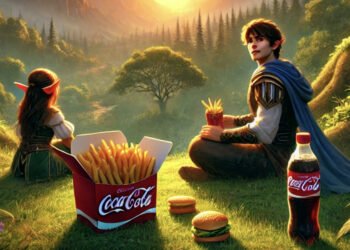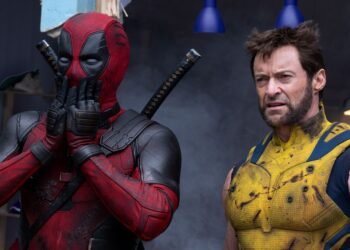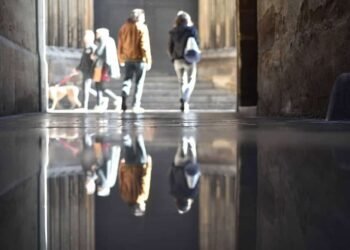Before watching Studio Ghibli’s new movie Earwig and the Witch, it pays to set expectations. Longtime Ghibli fans who go in hoping for a theatrical masterpiece on the order of Spirited Away are setting themselves up for disappointment, and even expecting one of Isao Takahata’s risky Ghibli style experiments is setting the bar too high.
Earwig and the Witch is the first CG feature made under the Ghibli banner, and it’s clearly aimed at small children rather than an all-ages audience. Director Goro Miyazaki consciously chose the small scale and simple story to make the project manageable for the largely freelance team who produced it, while Ghibli’s traditional animators were working on the next project from studio co-founder Hayao Miyazaki. Knowing Earwig was a cautious trial run for new technology won’t make this 82-minute film feel like a Ghibli classic, but it should temper some of the fears fans have expressed that this minor work represents the height of the studio’s future ambitions, and prep them for the project’s limitations.
The problems with Earwig and the Witch go beyond the animation, which lacks the visual depth and sophistication of recent Japanese CG features like Lupin III: The First. Like Ghibli’s traditionally animated 2004 feature Howl’s Moving Castle, Earwig is based on a novel by British novelist Diana Wynne Jones. But where Howl is one of her best and liveliest novels (which is saying a lot, given her deep bookshelf of terrific fantasy work), Earwig may be her simplest and most unrewarding. Published just after her death in 2011, it’s barely more than a short story, and Ghibli’s adaptation adds little to the stripped-down narrative.

Image: Studio Ghibli
Plucky protagonist Earwig is a witch’s daughter, abandoned at an orphanage in infancy by a harried mother being chased by 12 other witches for reasons never explained in either version. As a young girl, Earwig has learned to manipulate adults and kids alike, and she maintains her dominion over her orphanage through obsequiousness and favors. Then a witch named Bella Yaga and her eerie companion The Mandrake show up at the orphanage and adopt Earwig for use as a witch’s assistant, grinding rat-bones and slicing snake-skins for Bella Yaga’s spells. Bella Yaga thinks of her as a slave who will need to be threatened into submission. Earwig thinks of Bella Yaga as a chance to learn magic and gain even more power.
From the start, one of the movie’s biggest problems is that Earwig isn’t a particularly appealing protagonist. It’s one thing to have an omniscient narrator in the book proclaim, a little judgmentally, that she likes the orphanage because so many people do exactly what she wants. It’s quite another to have her openly boast in the film to her best friend, Custard, that she “controls” everyone at the orphanage, or to watch her later proclaim that controlling Bella Yaga and The Mandrake is a natural next goal. Ghibli films are full of genki girls who roll up their sleeves and put in the hard labor that produces good outcomes from bad situations, but they aren’t ordinarily this conniving and smug about it.
Earwig’s methods of control — wide-eyed insincerity, lavish compliments for her targets, and sneering behind their backs — doesn’t make her any more appealing. Ghibli protagonists are usually notable specifically for their sincerity: even the rare villains are straightforward about their desires, and fully immersed in their beliefs. Earwig’s open two-faced behavior would make her a minor villain in most kids’ stories, rather than the hero.
Fortunately, she’s up against outsized evils that balance out her selfishness. Where Jones’ books usually have a distinctive voice that isn’t quite like any other author’s, Earwig and the Witch reads a lot like a Roald Dahl story in the vein of Matilda or James and the Giant Peach, with comically awful adults whose misbehavior justifies equally outsized kid vengeance. Bella Yaga’s frequent threat to infest Earwig with purple-and-green worms if she doesn’t behave is fairly intimidating, and so are the frequent stormy rages from The Mandrake, a creature who changes size and shape when he’s annoyed, and gets annoyed very easily.
Earwig and the Witch doesn’t look much like a Ghibli movie, and not just because of the comparatively stiff, simple, plastic-textured CG animation. But the few familiar elements include Bella Yaga’s wild, overripe design, which recalls the similarly extreme visual caricatures of Howl’s Witch of the Waste and Spirited Away’s intimidating witch Yubaba. Bella Yaga’s familiar, a talking black cat named Thomas, is similarly reminiscent of Jiji in Kiki’s Delivery Service. But the biggest connection is the way strong emotion can alter everything about people, including their forms. The Mandrake, with his long, grouchy face and variable shape, is the most creative and colorful part of the film, and the most enjoyably scary for the intended child audience. An early moment where he glowers at Earwig at the orphanage, then gradually darkens and swells upward until his head brushes the ceiling, is a deliciously terrifying moment out of a fairy-tale nightmare.

Image: Studio Ghibli
Earwig could use more authentically creepy moments like that, and more departures from Jones’ very simple outline, which pits Earwig against Bella Yaga in a battle of wills that’s over almost as it begins. Purists could well complain at how far Howl’s Moving Castle departs from Jones’ terrific story in order to wedge in Hayao Miyazaki’s longstanding personal obsessions, like flight, the destructive and horrific nature of war, and the way courage conquers evil and love saves lives. But at least the film has a point of view, and the benefit of its creator’s highly specific and recognizable voice.
Earwig, by contrast, often feels generic. The departures from Jones’ book, which offer more of a look at Earwig’s mother and Bella Yaga’s past, are by far the most exciting parts of the story, and the most evocative. They just don’t go far enough. Instead, they open up enough questions to make this film feel like a pilot for a series that would take a much more specific voyage of discovery. What’s up with those 12 other witches chasing Earwig’s mom? Given how much this film feels like a test case, maybe Goro and Ghibli should take advantage of the time and effort invested in design and execution here, and keep expanding the Earwigverse. It’s wise to keep expectations for this project fairly low, but that shouldn’t keep anyone from hoping for bigger and better things in Ghibli’s future.
Earwig and the Witch opens in limited theatrical release on Feb. 3, and streams on HBO MAX starting Feb. 5. It will be available for digital rental, DVD, and Blu-ray on April 6. For more about theatrical safety measures, see Polygon’s guide to theatrical viewing during the COVID-19 pandemic.

